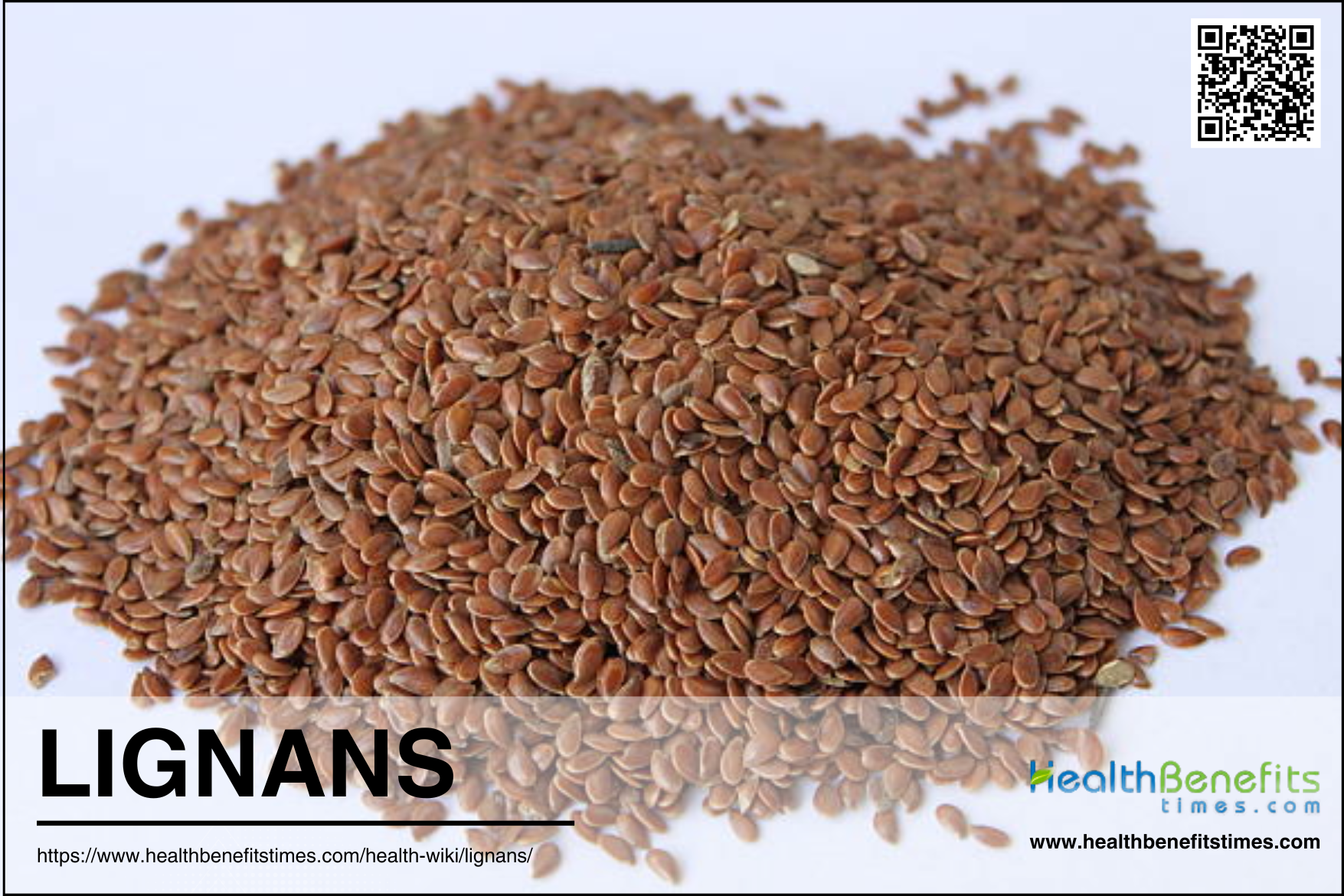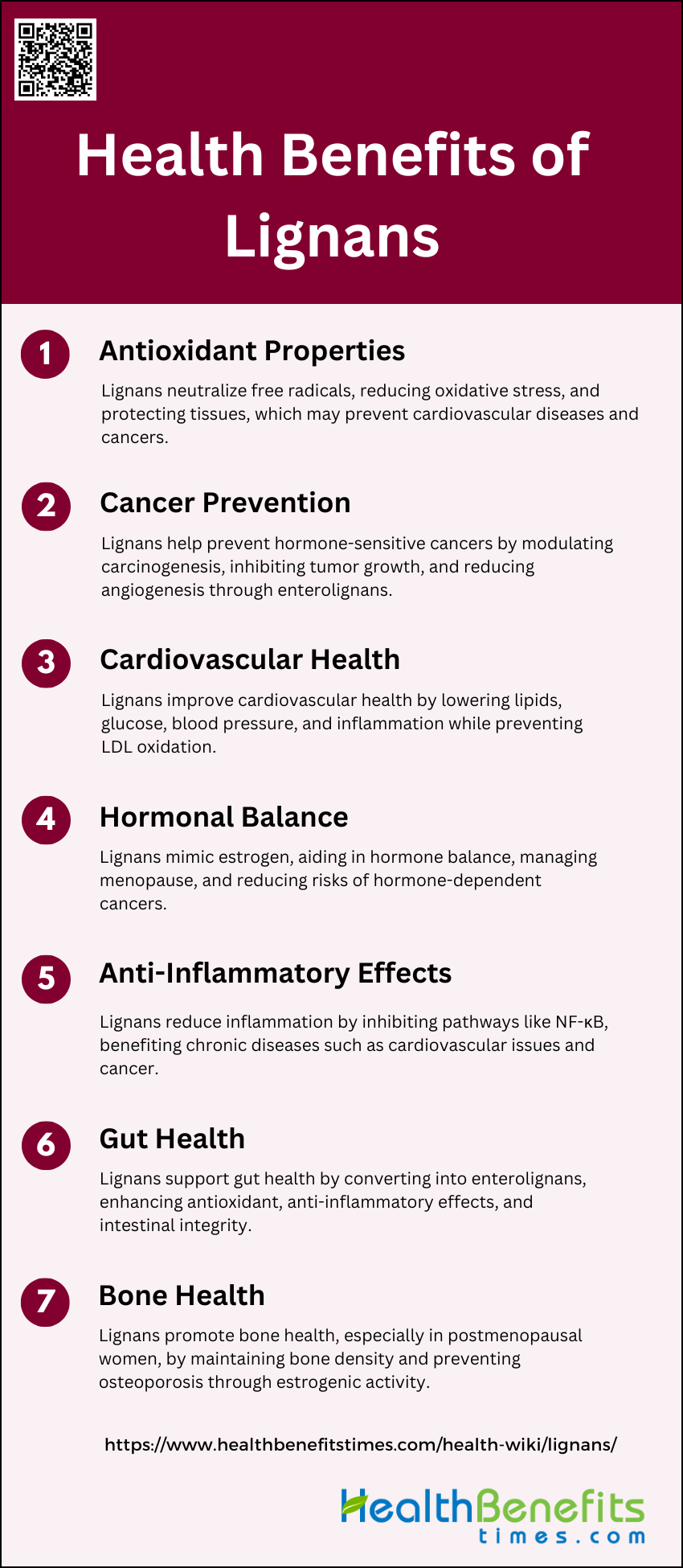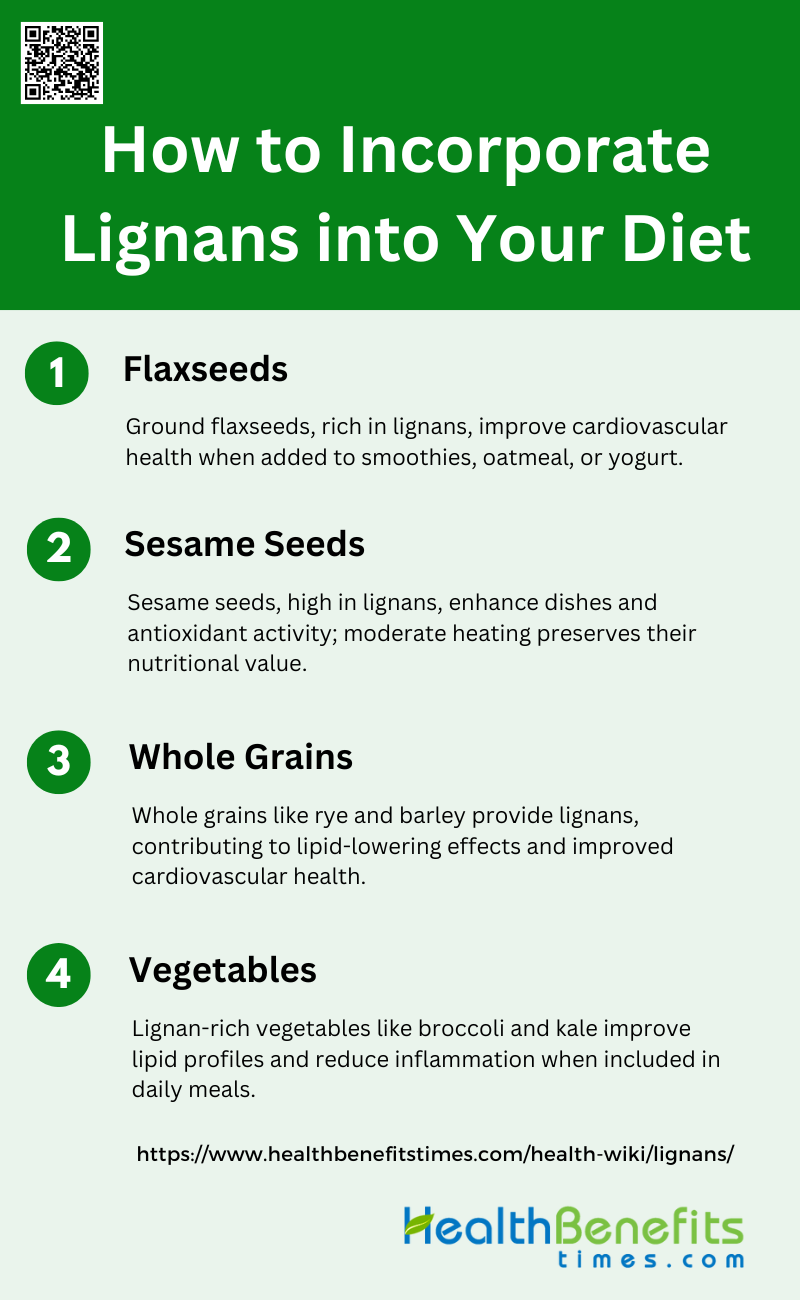Lignans are a class of secondary plant metabolites formed by the oxidative dimerization of two phenylpropanoid units, resulting in a diverse array of structures. These compounds are widely distributed in various plant species and are known for their significant biological activities, including anticancer, antioxidant, antimicrobial, anti-inflammatory, and immunosuppressive effects. In human health, lignans are converted by intestinal microflora into enterolactone and enterodiol, which are associated with protective roles against chronic diseases such as cancer and cardiovascular disease. The pharmacological potential of lignans extends to their use as therapeutic agents in disorders related to oxidative stress and inflammation, with ongoing research into their molecular mechanisms and synthetic production. Despite promising results, further clinical trials are necessary to substantiate the beneficial effects and optimal doses of lignan intake in humans.
Chemical Structure of lignans
Lignans are a diverse group of polyphenolic compounds found in a variety of plant-based foods such as seeds, whole grains, legumes, fruits, and vegetables. Chemically, lignans are characterized by the coupling of two phenylpropanoid units, typically linked by a bond between their propane side chains. This structural feature classifies them as non-flavonoid polyphenols, a subgroup of the broader polyphenol category. Lignans can be further categorized based on their oxidation levels into various groups such as dibenzylfuran, dibenzylbutyrolactol, dihydroxybenzylbutane, arylnaphthalene, and aryltetraline lactone derivatives. Upon ingestion, lignan precursors are metabolized by gut bacteria into enterolignans like enterodiol and enterolactone, which exhibit significant biological activities, including antioxidant, anti-inflammatory, and estrogenic effects. The structural diversity and bioactive properties of lignans underscore their potential health benefits, particularly in the prevention and treatment of chronic diseases such as cancer and cardiovascular disorders.
Sources of lignans
Lignans are a group of chemical compounds found in plants, known for their potential health benefits. They are primarily found in seeds, whole grains, and vegetables, and are known to exhibit antioxidant and estrogenic activities. Below is a list of common sources of lignans that can be incorporated into your diet for their various health benefits:
- Flaxseeds: Flaxseeds are recognized as the richest source of lignans, particularly secoisolariciresinol diglucoside (SDG), which is converted in the colon into enterodiol and enterolactone, compounds known for their potential in reducing the growth of hormone-sensitive tumors such as those of the breast, endometrium, and prostate.
- Sesame Seeds: Sesame seeds are another significant source of lignans, with sesamin being a major precursor. Studies have shown that sesamin can be metabolized into mammalian lignans, which may offer protective effects against hormone-related diseases like breast cancer.
- Whole Grains: Whole grains, including cereal brans and whole grain cereals, are important sources of lignans. The lignan content in these grains can vary, but they generally contribute to the overall intake of these beneficial compounds, which are linked to reduced risks of chronic diseases.
- Legumes and Nuts: Legumes and nuts are also rich in lignans and other bioactive compounds. These foods are known for their health-promoting properties, including anti-inflammatory and antioxidative activities, which contribute to the prevention of chronic diseases such as cardiovascular diseases and certain cancers.
- Cruciferous Vegetables: Cruciferous vegetables, such as broccoli, contain significant levels of lignans, particularly pinoresinol and lariciresinol. These vegetables contribute to the dietary intake of lignans, which are associated with various health benefits, including potential anticancer properties.
- Fruits and Vegetables: Many fruits and vegetables are sources of lignans, with concentrations varying among different types. These foods contribute to the overall intake of lignans, which are beneficial for health due to their antioxidant properties and potential role in reducing the risk of chronic diseases.
- Beverages: Certain beverages, such as coffee, tea, and red wine, contain lignans, although the levels can vary significantly. These beverages contribute to the dietary intake of lignans, which are metabolized by intestinal microflora into enterolignans, compounds that may offer protective health benefits.
How Do Lignans Work?
Lignans are plant compounds that play a significant role in human health by acting as antioxidants and phytoestrogens. They are metabolized by gut bacteria into enterolignans, which can mimic or modulate the action of estrogen in the body. Below is a list of mechanisms through which lignans exert their effects:
1. Biological Processes Involving Lignans
Lignans are plant-derived polyphenolic compounds that undergo complex metabolic processes in the human body. Upon ingestion, lignans such as secoisolariciresinol diglucoside (SDG) are metabolized by gut microbiota into enterolignans, primarily enterodiol (END) and enterolactone (ENL). This bioactivation process involves several steps, including hydrolysis, demethylation, and dehydroxylation, which occur predominantly in the colon. The bioavailability of lignans is influenced by the food matrix and the composition of gut microbiota, leading to significant interindividual variability in enterolignan production. These enterolignans are then absorbed into the bloodstream, where they can exert various biological effects, including modulation of hormonal metabolism and anti-inflammatory activities.
2. Lignans’ Interaction with the Body
Lignans interact with the body primarily through their antioxidant activity and their role as phytoestrogens. As antioxidants, lignans help neutralize free radicals, thereby reducing oxidative stress and potentially lowering the risk of chronic diseases such as cancer and cardiovascular diseases. As phytoestrogens, lignans can bind to estrogen receptors, exerting both estrogenic and antiestrogenic effects, which may influence hormonal balance and reduce the risk of hormone-related cancers. The gut microbiota plays a crucial role in converting dietary lignans into bioactive enterolignans, which are more bioavailable and possess enhanced biological activities, including anti-inflammatory and apoptotic effects. This interaction underscores the importance of gut health in maximizing the beneficial effects of lignans.
Health Benefits of Lignans
Lignans are plant-based compounds that offer a variety of health benefits due to their antioxidant and estrogenic properties. They have been linked to reduced risks of certain cancers, improved heart health, and better hormonal balance. Below is a list of specific health benefits associated with lignans:
1. Antioxidant Properties
Lignans are known for their potent antioxidant properties, which help in neutralizing free radicals and reducing oxidative stress in the body. These compounds, found in foods like flaxseed, sesame seeds, and various grains, can donate hydrogen atoms to stabilize free radicals and complex with divalent transition metal cations, thereby preventing oxidative damage to cells and tissues. Studies have shown that lignans can protect tissues such as the liver and brain from oxidative damage, highlighting their potential in preventing diseases associated with oxidative stress, including cardiovascular disorders and certain cancers.
2. Cancer Prevention
Lignans have shown promise in cancer prevention, particularly in hormone-sensitive cancers such as breast, endometrial, and prostate cancers. These compounds can modulate multiple targets of carcinogenesis, either through direct interaction or by influencing cellular and molecular pathways. The conversion of dietary lignans into enterolignans by gut microbiota plays a crucial role in their anticancer effects. Enterolignans have been found to inhibit tumor growth and metastasis, reduce angiogenesis, and prevent pre-cancerous cellular changes, making them valuable in cancer prevention strategies.
3. Cardiovascular Health
Lignans contribute significantly to cardiovascular health by reducing lipid and glucose concentrations, lowering blood pressure, and decreasing oxidative stress and inflammation. The antioxidant properties of lignans help in preventing the oxidation of low-density lipoprotein (LDL), a key factor in the development of atherosclerosis. Additionally, lignans’ ability to modulate inflammatory pathways further supports cardiovascular health by reducing the risk of chronic inflammation-related cardiovascular diseases.
4. Hormonal Balance
Lignans are classified as phytoestrogens due to their ability to mimic estrogen in the body. This property is particularly beneficial for managing menopausal symptoms and reducing the risk of hormone-dependent cancers. Lignans can bind to estrogen receptors and exert weak estrogenic or anti-estrogenic effects, which help in balancing hormone levels. This modulation of estrogen activity is also linked to reduced risks of breast cancer and other estrogen-related conditions.
5. Anti-Inflammatory Effects
Lignans exhibit strong anti-inflammatory properties by inhibiting key inflammatory pathways, such as the nuclear factor (NF)-κB pathway. These compounds can reduce the production of pro-inflammatory cytokines and reactive oxygen species (ROS), thereby mitigating inflammation. The anti-inflammatory effects of lignans are beneficial in managing chronic inflammatory diseases, including cardiovascular diseases, cancer, and gastrointestinal disorders.
6. Gut Health
The interaction between lignans and gut microbiota is crucial for their health benefits. Gut microbiota convert dietary lignans into biologically active enterolignans, which play significant roles in maintaining gut health. Enterolignans exhibit antioxidant and anti-inflammatory properties, enhance intestinal barrier integrity, and modulate gene expression and enzyme activity. These effects contribute to improved gut health and protection against gastrointestinal diseases.
7. Bone Health
Lignans may also support bone health, particularly in postmenopausal women. Their phytoestrogenic properties help in maintaining bone density and reducing the risk of osteoporosis. By mimicking estrogen, lignans can positively influence bone metabolism and prevent bone loss associated with estrogen deficiency. This makes lignans a valuable dietary component for promoting bone health and preventing osteoporosis in aging populations.
How to Incorporate Lignans into Your Diet
Incorporating lignans into your diet is a simple and effective way to boost your overall health. These plant compounds can be found in a variety of foods, making it easy to include them in your daily meals. Below is a list of ways to add lignans to your diet:
1. Flaxseeds
Flaxseeds are a rich source of lignans, omega-3 fatty acids, and fiber, making them a valuable addition to your diet. To maximize their health benefits, it is recommended to consume ground flaxseeds rather than whole seeds, as milling and crushing significantly enhance the bioavailability of lignans. You can easily incorporate ground flaxseeds into your daily meals by adding them to smoothies, oatmeal, or yogurt. Regular consumption of flaxseeds has been shown to lower total cholesterol and LDL cholesterol levels, which can reduce the risk of cardiovascular disease.
2. Sesame Seeds
Sesame seeds are another excellent source of lignans and can be easily added to various dishes. Sprinkling sesame seeds on salads, stir-fries, or baked goods not only enhances the flavor but also boosts your intake of beneficial lignans. Studies have shown that sesame seeds, when consumed in combination with flaxseeds, can increase serum gamma-tocopherol levels, which is beneficial for antioxidant activity. However, it is important to note that the lignan content in sesame seeds can degrade at high temperatures, so moderate heating is recommended to preserve their nutritional value.
3. Whole Grains
Whole grains such as rye, barley, and oats are also rich in lignans and can be a significant part of a lignan-rich diet. Including these grains in your meals can provide a steady source of lignans, which are beneficial for overall health. Whole grains can be consumed in various forms, such as bread, cereals, or as part of a balanced meal. The lignans in whole grains contribute to their health benefits, including potential lipid-lowering effects and improved cardiovascular health.
4. Vegetables
Certain vegetables, including broccoli and kale, are known to be rich in lignans and should be included in your daily meals. These vegetables not only provide essential vitamins and minerals but also contribute to your lignan intake. Incorporating a variety of lignan-rich vegetables into your diet can enhance your overall nutrient profile and support health benefits such as improved lipid profiles and reduced inflammation. Regular consumption of these vegetables can be achieved by adding them to salads, soups, or as side dishes in your meals.
Potential Side Effects and Considerations of lignans
Possible Allergic Reactions
Lignans, a group of phenolic compounds found in plant-based diets, are generally considered safe for consumption. However, like many dietary components, they can potentially cause allergic reactions in some individuals. Allergic responses to lignans may manifest as skin rashes, gastrointestinal discomfort, or respiratory issues. Although there is limited direct evidence on lignan-specific allergies, it is crucial for individuals with known sensitivities to phenolic compounds or plant-based foods to exercise caution. Further research is needed to comprehensively understand the allergenic potential of lignans and to establish guidelines for individuals with allergies.
Impact on Individuals with Hormone-Sensitive Conditions
Lignans are metabolized into enterolignans, which exhibit estrogen-like activity. This characteristic can be beneficial or detrimental depending on the individual’s health status. For individuals with hormone-sensitive conditions, such as breast cancer or endometriosis, the estrogenic effects of lignans may pose risks. Studies have shown that lignan administration during pregnancy and lactation can reduce the risk of breast cancer in offspring, but the safety of lignans for pregnant women and children remains under investigation. Therefore, individuals with hormone-sensitive conditions should consult healthcare providers before incorporating lignans into their diet.
Safe Consumption Guidelines
The safe consumption of lignans varies depending on life stages and individual health conditions. Current research suggests that lignans can be safely consumed in moderate amounts through a balanced diet rich in plant-based foods. For example, a study involving postmenopausal women consuming 500 mg/day of a lignan complex for six weeks showed no adverse effects on endothelial function, indicating that such a dosage is likely safe for this demographic. However, the optimal dosage and long-term safety of lignans require further investigation to establish comprehensive dietary guidelines.
FAQs
1. Are lignans safe for children and pregnant women?
While lignans are generally considered safe, the effects of lignans on children and pregnant women have not been extensively studied. It is advisable for pregnant women, nursing mothers, and parents of young children to consult healthcare providers before significantly increasing lignan intake.
2. Can lignans interfere with medications?
Lignans, due to their estrogen-like effects, may interact with certain medications, particularly those related to hormone regulation or blood clotting. It’s important to discuss potential interactions with a healthcare provider if you are taking medications.
3. Do lignans have any impact on weight management?
Although not primarily discussed, some studies suggest that the fiber content and hormone-modulating effects of lignans could potentially support weight management efforts. However, more research is needed to confirm these effects.
4. How do lignans compare to other phytoestrogens like isoflavones?
Lignans and isoflavones are both types of phytoestrogens, but they differ in chemical structure and source. Lignans are more commonly found in seeds like flaxseed, while isoflavones are abundant in soy products. The health benefits and estrogenic effects may vary between these compounds, and individual responses can differ.
5. Can consuming too many lignans lead to side effects?
While lignans are beneficial in moderate amounts, excessive intake could potentially lead to imbalances in estrogen levels or digestive discomfort, especially in those sensitive to high fiber. It’s best to consume lignans as part of a balanced diet.
6. Do lignans affect men’s health differently than women’s health?
Lignans may impact men and women differently due to their interaction with hormones. For men, lignans are believed to support prostate health, while in women, they may help with menopausal symptoms. However, individual effects can vary, and more gender-specific research is needed.
7. Is it better to consume whole foods or supplements to get lignans?
While lignan supplements are available, obtaining lignans from whole foods like flaxseeds, sesame seeds, and whole grains is generally recommended. Whole foods provide additional nutrients and fiber that supplements may not offer.
8. How do processing and cooking affect lignan content in foods?
The lignan content in foods can be affected by processing and cooking. For example, grinding flaxseeds increases lignan bioavailability, but excessive heat during cooking may reduce lignan levels in some foods like sesame seeds.
9. What role do lignans play in mental health?
Emerging research suggests that lignans might have a role in mental health by modulating inflammation and oxidative stress, both of which are linked to conditions like depression. However, more research is required to establish clear benefits.
10. Can lignans be beneficial for skin health?
While not extensively covered, lignans’ antioxidant properties may contribute to skin health by reducing oxidative stress, which is linked to aging and skin damage. Further studies are needed to confirm their effectiveness in skincare.




